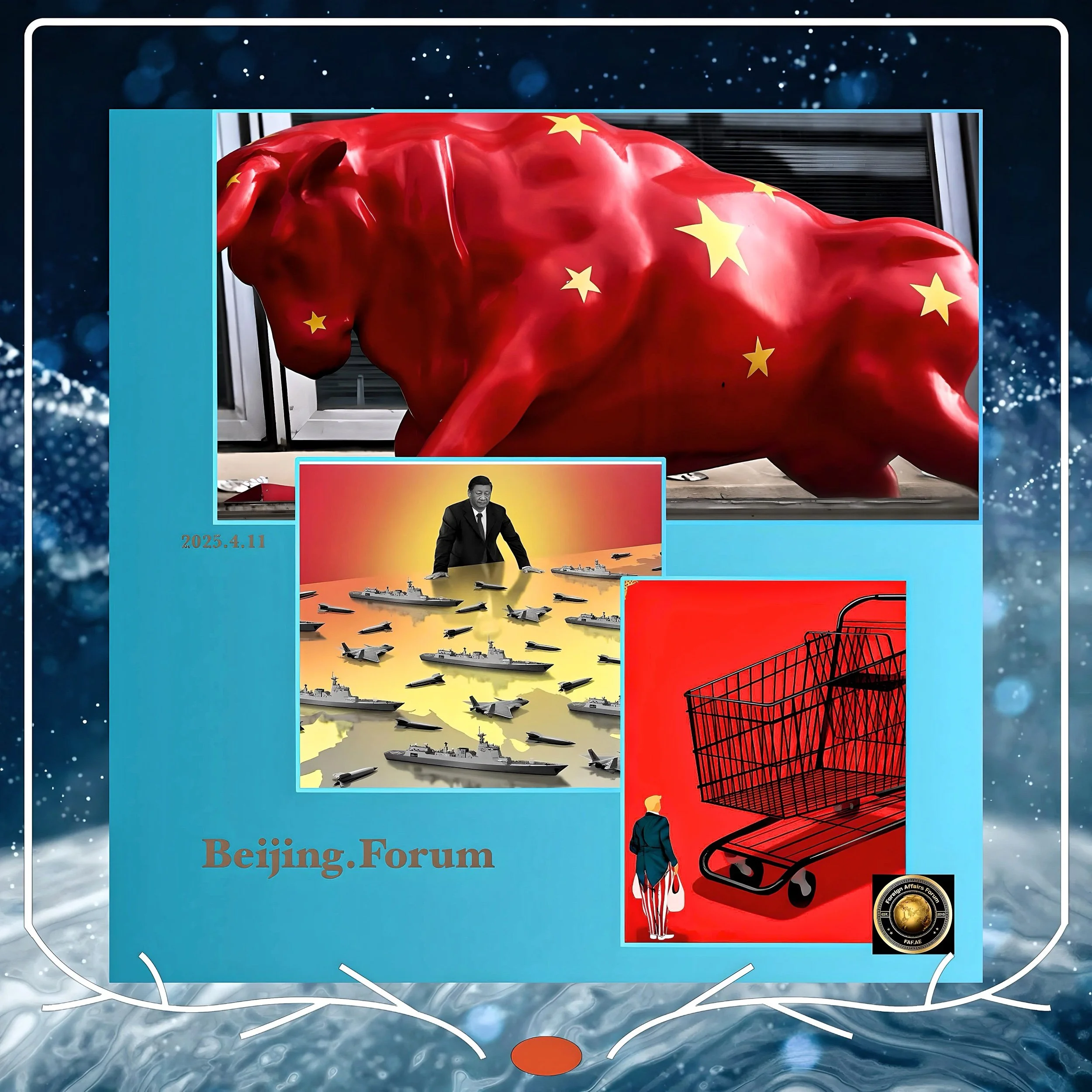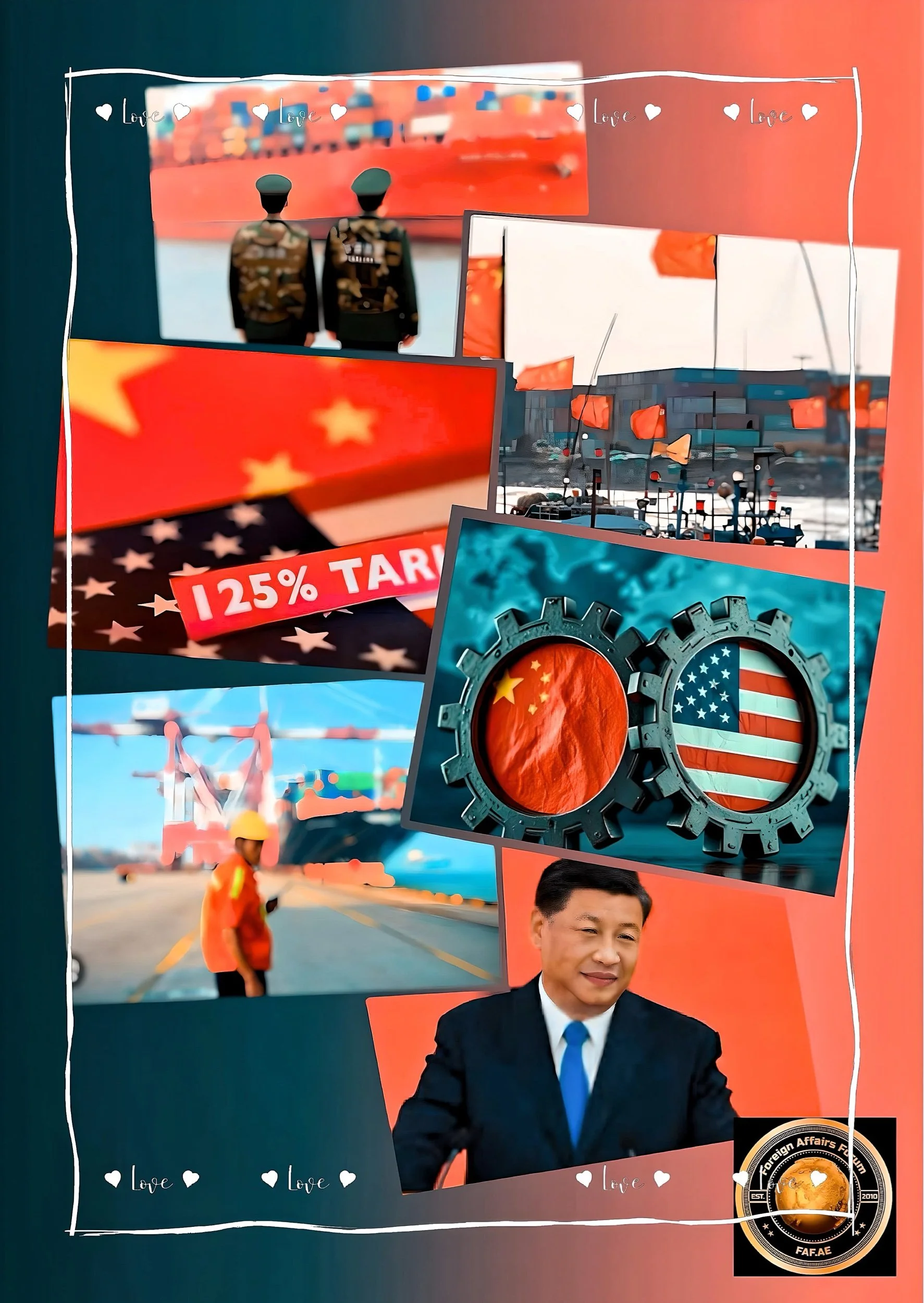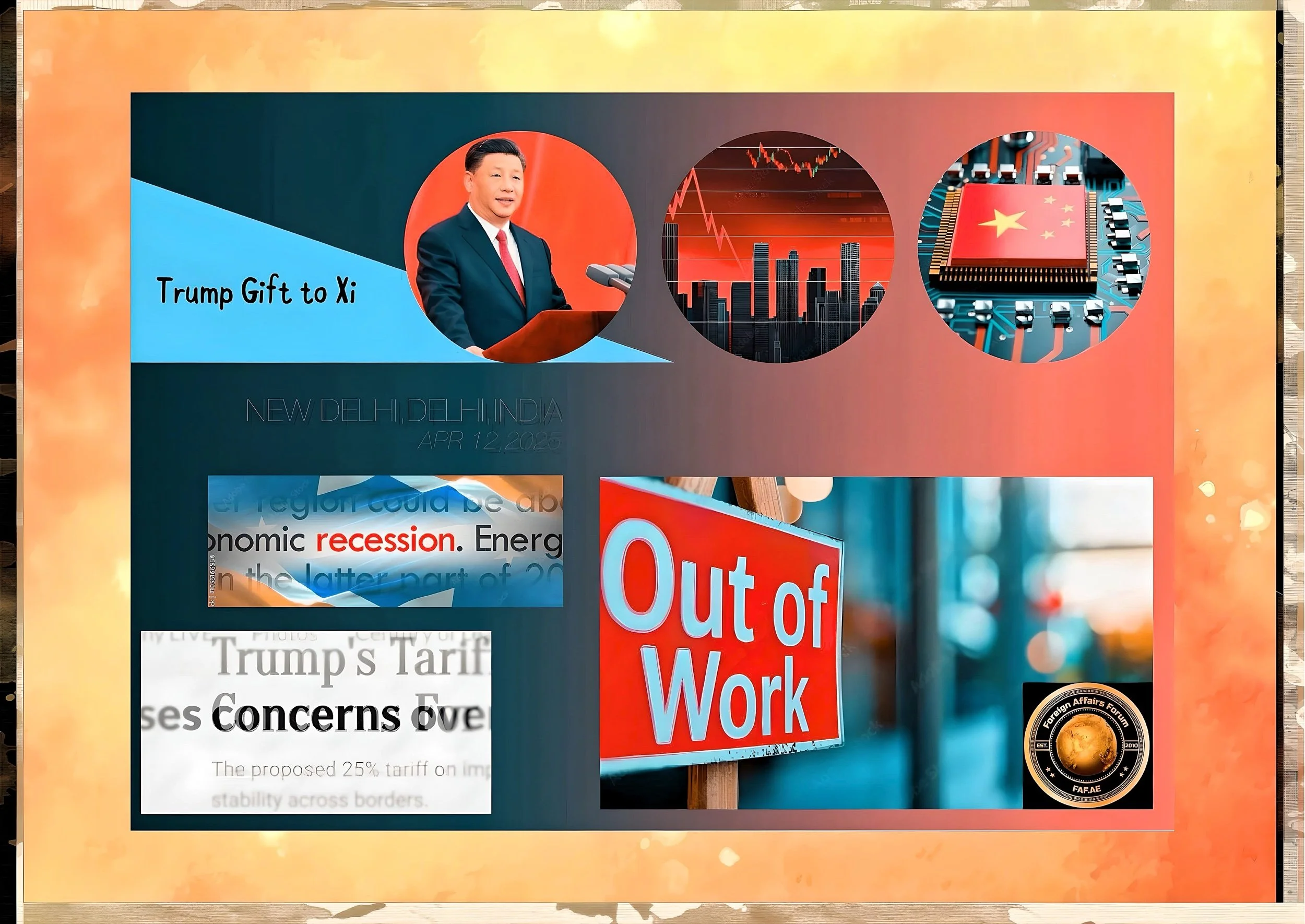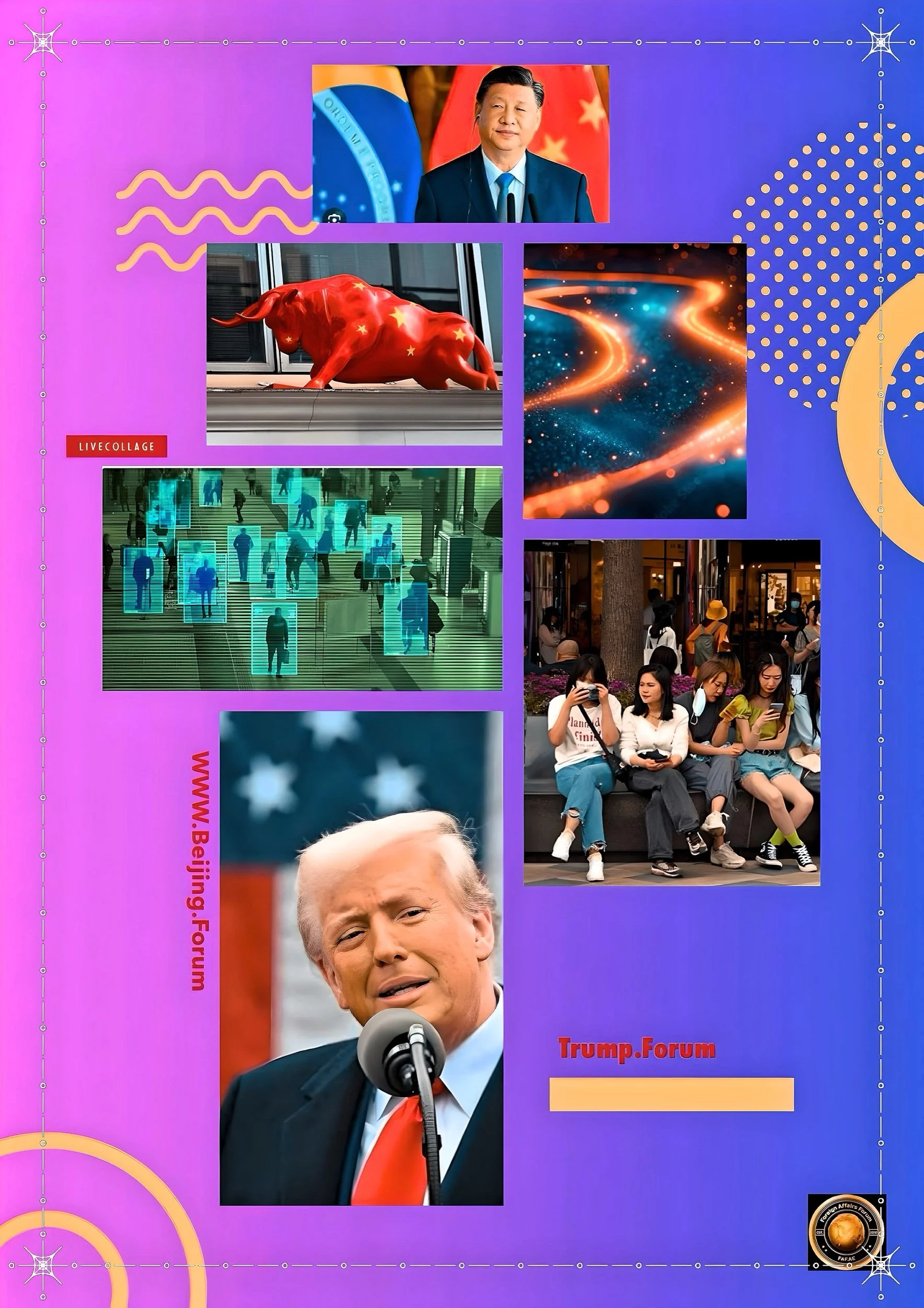Why Beijing Thinks It Can Beat Trump: China’s Elite Confidence in the Face of Tariff Escalation
Introduction
China’s leadership has demonstrated remarkable resilience in the face of President Trump’s aggressive tariff policies, which recently escalated to an unprecedented 125% on Chinese imports.
Despite this economic pressure, Beijing has not only matched these tariffs but maintains a steadfast belief that it can withstand and potentially prevail in this trade confrontation.
This conviction stems from several factors: China’s centralized political structure provides mechanisms for weathering economic turbulence; years of preparation have reduced dependency on the U.S. market; Xi Jinping’s consolidated power allows for long-term strategic patience; and China’s ability to control domestic narratives frames this as a patriotic struggle rather than policy failure.
However, these advantages are counterbalanced by serious economic vulnerabilities, including slowing growth, deflation, and the risk of manufacturing job losses that could trigger social instability.
China’s Political System as a Strategic Advantage
China’s political system, characterized by centralized authority under the Communist Party, provides Beijing with distinct advantages in confronting Trump’s tariff offensive. Experts suggest this system grants Chinese leadership greater flexibility and control in responding to economic challenges.
According to Zhu Feng, dean of the School of International Studies at Nanjing University, China’s state-led administrative system offers more room for “macroscopic prevention, adjustment and shifting to deal with the huge impact of the trade war on its economy and industry.”
This centralized control allows Beijing to coordinate economic responses across different sectors without the constraints of democratic processes or electoral considerations that might limit policy options in Western democracies.
The absence of electoral pressure represents another critical advantage for Xi Jinping in this economic standoff. Unlike Trump, who faces electoral constraints and must consider how economic policies affect his political base, Xi has secured his position as China’s leader indefinitely following constitutional changes that removed term limits.
This political security allows Xi to adopt a longer-term perspective, potentially absorbing short-term economic pain to achieve strategic objectives.
The Chinese leadership can make decisions with a time horizon that extends beyond election cycles, enabling them to wait out adversarial administrations if necessary.
This patience represents a significant asymmetry in the trade confrontation, as Beijing can strategically delay significant concessions while waiting for potentially more favorable negotiating conditions.
Xi Jinping has also built a system of intense party loyalty and centralized decision-making that streamlines crisis response.
The Two Sessions gathering in March 2025 revealed that “personal worship of President Xi has reached a new peak,” with delegates praising him “as if he were an all-knowing saint.”
This consolidation of authority enables quick and decisive action during economic challenges without requiring lengthy consensus-building.
Additionally, the Chinese system allows for “shutting the door and telling the truth” on economic matters, permitting frank internal discussions about problems while presenting a unified message to the outside world.
This duality gives Chinese leaders the benefit of realistic internal assessments while maintaining confidence externally.
Media Control and Nationalist Messaging
China’s extensive control over media and information flows provides another significant advantage in managing public perception of the trade conflict.
Chinese state media has mobilized to frame the tariff battle as a patriotic struggle against foreign aggression rather than a leadership policy failure.
This narrative control allows Beijing to channel potential public frustration away from domestic leadership and toward external forces.
For instance, the People’s Daily, the Communist Party’s official publication, released an editorial comparing Washington to “a gang of pirates,” Chinese diplomats are reportedly uniting with one calling for a “diplomatic iron army” characterized by loyalty to the Party.
The power to shape public discourse potentially enables Xi to potentially turn the trade conflict to his political advantage. As political scientist Elizabeth Economy noted, “Xi Jinping can assert that the United States is attacking us, which could foster a nationalist sentiment within China”.
This nationalistic framing is a powerful tool for maintaining social cohesion during economic difficulties and justifies continued Communist Party leadership as necessary for protecting Chinese interests.
Mao Ning, a spokesperson for the Chinese Foreign Ministry, exemplified this messaging by sharing on social media a video of a speech by Mao Zedong during the Korean War in which he declared, “No matter how long this conflict lasts, we will never capitulate.”
Such historical parallels reinforce the narrative of China standing firm against American aggression.
Xi can also leverage the trade conflict to validate his longstanding warnings about Western hostility toward China. Trump’s decision to single out China while exempting other countries from tariffs plays directly into this narrative, allowing Xi to frame the conflict as evidence of targeted American efforts to contain China’s rise.
As political scientist Daniel Torigian observed, this situation “effectively absolves Xi Jinping from accountability for China’s sluggish economic growth.
It serves as a ‘get out of jail’ card for him”. By redirecting blame for economic challenges to external factors, Xi can potentially maintain public support despite the negative impacts of the trade war on Chinese businesses and workers.
Economic Preparation and Strategic Endurance
Beijing’s confidence stems partly from years of deliberate preparation for reduced economic dependence on the United States. Following the first trade war during Trump’s initial term, Chinese officials launched a comprehensive effort to diversify the country’s export markets and reduce vulnerability to American tariffs.
This strategic reorientation has yielded measurable results: U.S.-bound exports have declined from 20% of China’s total in 2018 to under 15% today.
While leaving China significantly exposed to the American market, this reduction demonstrates a successful effort to mitigate the impact of potential trade disruptions with the United States.
Chinese manufacturers have also adopted strategies to circumvent tariffs, including relocating operations to third countries like Vietnam and Cambodia.
This industrial reorganization has created more resilient supply chains that can adapt to changing trade barriers. Simultaneously, China has strengthened its position in strategic sectors like rare earth minerals and advanced technology.
The government has prioritized domestic innovation in artificial intelligence, robotics, and semiconductors, particularly through firms like Huawei and DeepSeek. As Victor Shih of UC San Diego noted, “The Chinese government has been preparing for this day for six years.”
These preparations suggest China is not merely reacting to tariffs but has been implementing a long-term strategy to reduce American economic leverage.
China has also developed tools to mitigate the domestic impact of tariffs. Beijing can deploy monetary and fiscal support to soften the economic blow on affected industries and workers.
Premier Li Qiang emphasized that the government is “fully capable of hedging against adverse external influences,” several public investment firms, including Chengtong and Huijin, have pledged to enhance equity investments and stabilize financial markets.
These interventions appear to be working in the short term, as Chinese stock markets have outperformed others in Asia despite the escalating trade tensions. Shanghai’s SSE Composite Index gained 1.1%, while Japan’s Nikkei fell by 3.9%.
This ability to shield domestic markets from immediate shocks provides Chinese leadership with breathing room to formulate longer-term responses.
The Chinese government also possesses various economic levers to offset the impact of tariffs. Economist Jayati Ghosh suggests China might pursue “further reductions in already low interest rates along with more borrowing by local governments and assistance for affected export workers.”
Additionally, China could allow the yuan to depreciate, effectively reducing export prices and mitigating some tariff losses. Beijing might also “quietly” increase support to trading partners, particularly in the Global South, through strategies like “loans and debt relief” to maintain export markets.
These multiple economic tools give China flexibility in responding to American pressure and sustaining financial stability despite tariff barriers.
Diplomatic Strategy and Global Positioning
China is actively working to turn Trump’s tariff policies into a diplomatic opportunity by positioning itself as a defender of the multilateral trading system. By framing U.S. actions as attacks on global trade rather than bilateral issues, Beijing seeks to isolate Washington diplomatically.
Lin Jian, China’s foreign ministry spokesman, characterized Trump’s tariffs as actions that “seriously damage the rules-based multilateral trading system and seriously impact the stability of the global economic order.”
This positioning allows China to present itself as a responsible stakeholder in global trade while portraying the United States as a disruptive force acting unilaterally against international norms.
Beijing also leverages Trump’s confrontational approach to deepen ties with other major economies affected by American trade policies. Following the announcement of Trump’s tariffs, “Japan, China, and Korea—who trade massive amounts with each other but have had many trade conflicts in recent years—held a meeting to consider closer cooperation.”
All three nations are already connected through the Regional Closer Economic Partnership (RCEP), which provides a framework for enhanced coordination.
China has also reached out to the European Union, with Premier Li Qiang speaking with European Commission President Ursula von der Leyen and Commerce Minister Wang Wentao conferring with EU Commissioner for Trade and Economic Security Šefcovic to discuss U.S. “reciprocal tariffs.”
These diplomatic initiatives aim to prevent China’s international isolation and potentially create alternative economic blocs.
Chinese officials appear confident that the current trade conflict might accelerate the development of a global economic order less centered on the United States.
According to China analyst Ryan Hass from the Brookings Institution, following discussions with Chinese policymakers, “There is a debate about the world transitioning into a period of blocs or moving towards globalization minus the US. Beijing seems to favor the latter scenario.”
This assessment suggests that Chinese leadership may view Trump’s tariff policies not merely as a challenge to overcome but as a potential catalyst for restructuring global economic relationships in ways that could benefit China in the long term. Despite the short-term pain, Beijing might see an opportunity to advance its position in a post-American-led trading system.
Challenges to China’s Confidence
Despite these advantages, China faces significant economic vulnerabilities that could undermine its ability to withstand a prolonged trade conflict.
Even before the current tariff escalation, China’s economy struggled with several structural challenges, including deflation, a troubled property market, and high debt level.
These existing pressures make the economy less resilient to external shocks like tariffs. Financial analysts have raised serious concerns about the potential impact of Trump’s policies, with Goldman Sachs projecting that the latest tariffs could decrease China’s GDP by as much as 2.4 percent.
UBS has expressed even greater pessimism, suggesting growth could fall to just 4 percent in 2025, well below the government’s official target of 5 percent.
The manufacturing sector, a crucial component of China’s economy, is already showing signs of strain from the tariff conflict. Reports indicate that factories in and around Guangzhou that supply apparel to American consumers have already shut down until there is more clarity regarding the tariffs.
If these closures spread to other manufacturing hubs, they could exacerbate China’s existing unemployment challenges, particularly among young workers.
The potential loss of manufacturing jobs presents a significant social and political risk for Chinese leadership, as widespread unemployment could undermine public support for the government’s approach to the trade conflict.
Xi Jinping also faces the challenge of maintaining public support during economic hardship, a task that proved difficult during previous crises.
When Xi last faced a challenge of comparable magnitude—the COVID-19 pandemic—his “zero-COVID” policies eventually provoked significant public backlash despite initial popular support.
After two years of strict lockdowns, “public frustration sparked some of the largest protests in decades” and “discontent with the country’s trajectory prompted an exodus of affluent Chinese and professionals”.
This experience suggests there are limits to how much economic pain Chinese citizens are willing to accept, even in a system with strong controls on public expression.
As one analyst noted, “The Chinese populace may not be in a mindset for sacrifice post-Covid. The economy has struggled to recover”.
International isolation represents another potential vulnerability in China’s position. Trump’s strategy of exempting all countries except China from his most severe tariffs threatens to leave Beijing diplomatically isolated in the trade conflict.
The 90-day pause for other countries creates an incentive for them to negotiate bilateral arrangements with the United States rather than joining China in opposition to Trump’s policies.
As one analysis observed, “Trump’s 90-day pause on reciprocal tariffs for all countries but China is proving to be a sharp move. Trump’s tariffs had pitted the US against the rest of the world but now it appears to be primarily a US versus China battle”.
This isolation could weaken China’s ability to present itself as defending global trading norms and increase pressure to make concessions.
Xi’s Calculated Risk and Trump’s Unpredictability
Xi Jinping appears to be making a calculated risk that China can withstand the economic pressure from tariffs while maintaining social stability.
This calculation rests partly on confidence in China’s political system to manage the economic fallout and control public perception.
However, as one observer noted, “Even if one believes they possess strong repressive capabilities to silence dissenters and a jingoistic narrative to rally supporters, economic disruptions remain perilous as the extent of the fallout is unpredictable and could escalate into something more severe”.
The unpredictable nature of economic contagion means that even strong state control mechanisms may not be sufficient if the trade conflict triggers widespread business failures or unemployment.
Trump’s unpredictability also complicates China’s strategic calculations. The rapid shifts in American policy—imposing global tariffs and then quickly exempting most countries except China—make it difficult for Beijing to formulate a consistent response.
The absence of reliable interlocutors further complicates matters, as “Trump has centralized trade decisions around himself, leaving cabinet officials and envoys unable to act with authority”.
This uncertainty may push Chinese leadership toward a more cautious approach despite their public defiance. As one analysis concluded, “Each side believes time is on its side, which raises the risk that neither moves to de-escalate until real damage is done”.
Despite the tough rhetoric, there are indications that Chinese officials might be open to negotiations under the right conditions.
Commerce Ministry spokeswoman He Yongqian stated that “The door to dialogue is open, but it must be based on mutual respect and conducted in an equal manner”.
This suggests Beijing may be keeping communication channels available while waiting to see if the economic pressure forces either side to modify its position. Trump has also signaled potential flexibility, stating on Thursday that Xi “has been a friend of mine a long time” and that “We would love to reach a deal”.
These mutual openings could provide a path to de-escalation if the economic costs become too high for either party.
Conclusion: A Test of Systems and Will
The current U.S.-China trade conflict represents more than just a dispute over tariffs—it has evolved into a test of competing political and economic systems. Chinese leadership believes its centralized, state-led approach provides advantages in withstanding economic pressure and mobilizing national resources.
As one analysis put it, “This is no longer about tariffs alone. It’s a test of wills”. Beijing’s confidence stems from its ability to control domestic narratives, implement coordinated economic responses, and pursue long-term strategic objectives without the constraints of electoral politics.
However, China’s confidence must be weighed against significant economic vulnerabilities and the potential for social unrest if the trade conflict triggers widespread job losses or further economic slowdown.
The ultimate outcome will depend on multiple factors: the resilience of China’s economy, the effectiveness of state interventions to mitigate economic damage, the willingness of other countries to side with either the U.S. or China, and the tolerance of Chinese citizens for economic hardship.
While Beijing displays public confidence in its ability to withstand Trump’s tariffs, the economic realities may eventually force pragmatic compromises from both sides.
The evolving trade conflict also carries broader implications for the global economic order. As Richard Baldwin notes, “Trump’s reciprocal tariffs are undermining the principles of the world trade system” that the U.S. itself established and defended for generations.
As this system fractures, both the United States and China are maneuvering to shape what comes next.
Beijing appears to see this disruption as an opportunity to advance an alternative vision of global economic relations less dominated by American influence.
Whether China can actually capitalize on this opportunity while managing the immediate economic challenges posed by tariffs remains an open question with significant consequences for global trade and geopolitics.






